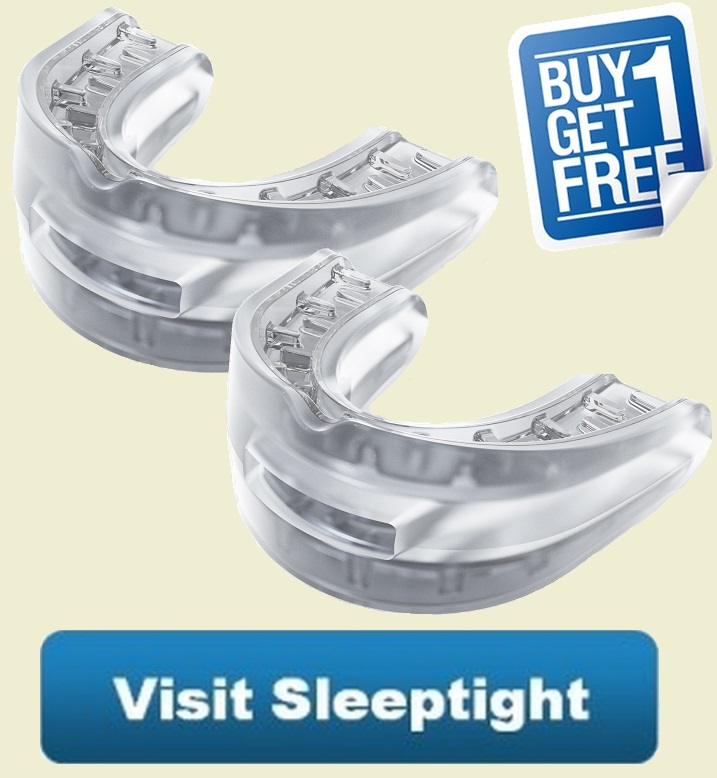 Every year an increasing number of people are being diagnosed with Obstructive Sleep Apnea (OSA) and they have typically issued a CPAP machine which for years has been the gold standard for treating OSA. Unfortunately, many find their prescribed mask to be uncomfortable and end up storing the device away in a closet or they seek alternative treatment methods. One such alternative is the sleep apnea mouthpiece, also known as a mandibular advancement device. Lately, there has been a bit of confusion when it comes to exactly what a sleep apnea mouthpiece is and how it compares to commonly advertised mouth guards for snoring. The two devices are similar in nature but are they the same?
Every year an increasing number of people are being diagnosed with Obstructive Sleep Apnea (OSA) and they have typically issued a CPAP machine which for years has been the gold standard for treating OSA. Unfortunately, many find their prescribed mask to be uncomfortable and end up storing the device away in a closet or they seek alternative treatment methods. One such alternative is the sleep apnea mouthpiece, also known as a mandibular advancement device. Lately, there has been a bit of confusion when it comes to exactly what a sleep apnea mouthpiece is and how it compares to commonly advertised mouth guards for snoring. The two devices are similar in nature but are they the same?
Similarities between sleep apnea mouthpiece and snoring mouthguard
 There are a number of similarities between the two devices. Technically speaking, they both are mandibular advancement devices. This simply means that they are designed to hold the lower jaw in a slightly forward position. In most cases, the lower jaw is advanced to the extent where the lower front teeth slightly surpass the upper teeth. As a result, muscles around the throat area are “tightened up”.
There are a number of similarities between the two devices. Technically speaking, they both are mandibular advancement devices. This simply means that they are designed to hold the lower jaw in a slightly forward position. In most cases, the lower jaw is advanced to the extent where the lower front teeth slightly surpass the upper teeth. As a result, muscles around the throat area are “tightened up”.
Almost all sleep apnea mouthpiece and snoring mouthguards are custom fitted to an individuals mouth one way or another. Devices that are used specifically for sleep apnea (occasionally for snoring) are typically fitted by a dentist while devices intended for snoring can be fitted without the assistance of a dentist. The majority of dentist fitted units specifically made for sleep apnea are created by taking an exact impression of your teeth which serves as a mold. A custom piece is then cast using the mold and then assembled into the mouthpiece. For the most part, dentist fitted devices offer a better fit when compared to DIY snoring remedies.
Devices that are used to control snoring are custom fitted using a number of techniques. Perhaps one of the most popular techniques is to heat the device in hot water for a specified time period and then gently bite into it to create an impression. They are typically made of a thermoplastic material and commonly referred to as “boil and bite” mouthguards.
In some cases, the two types share the trait of adjustability. For example, VitalSleep and SnoreRx are both used for snoring and are fully adjustable. All MADs manufactured specifically for OSA should be created with an adjustment feature.
What’s the difference?
 While they share a lot of the same attributes there are a few differences that should be pointed out.
While they share a lot of the same attributes there are a few differences that should be pointed out.
First, the most important difference between the two has to do with the intended use. A sleep apnea mouthpiece is a medical device that is generally used to treat obstructive sleep apnea. One should complete a number of steps before obtaining a proper diagnosis of sleep apnea. At this point (depending on the type of apnea and extent of the problem) a sleep apnea mouthpiece may be suggested as a treatment option.
A snoring mouthguard can be purchased online without obtaining a prescription and is intended to treat benign snoring. Benign snoring means that you simply snore which unlike sleep apnea doesn’t cause damage to your health, although it can be somewhat of an annoyance to other. Such devices can be quite effective when it comes to silencing the sound of simple snoring but beware, it’s possible that what you believe to be simple snoring is a symptom of a more serious condition such as OSA. Therefore, it’s advisable to first speak with your doctor before attempting to silence a snoring problem, even if you believe that your snoring is benign.
If you are looking for a remedy to stop your simple snoring, I found the GMSS to be easy to use and very effective. Here is a review that I wrote if you would like more information.
Another difference has to do with the overall construction of each device. For the most part, snoring mouth guards will last for anywhere between 6-24 months depending on use and the way that it’s designed. Sleep apnea mouthpieces are made from acrylic resins and can last for several years. This is the same material that is often used to create dentures. It is a harder material which can withstand everyday use for an extended period of time.
Then there is, of course, the price difference. Units specifically designed for sleep apnea treatment are a bit more costly. Depending on the specific model that you choose, they can range anywhere from $1,500 on up. In comparison, devices specifically designed to treat snoring cost on average between $50 and $100 more or less. Keep in mind that they must be replaced after a few months so purchasing 2 or more at a time might be a good idea especially if you are offered a discount for purchasing multiple units.
Using a snoring mouth guard to treat sleep apnea
 At this point, you may be asking yourself if you can use a snoring mouthguard to treat your sleep apnea. After all, they are quite similar in nature and seem to perform the same function. One costs less than $100 while the other can cost several thousands of dollars. What’s the deal?
At this point, you may be asking yourself if you can use a snoring mouthguard to treat your sleep apnea. After all, they are quite similar in nature and seem to perform the same function. One costs less than $100 while the other can cost several thousands of dollars. What’s the deal?
While treating sleep apnea, a doctor must be there to evaluate the effects of the mouthpiece on your apnea in addition to other side effects that may occur. He or she can make appropriate adjustments and ultimately determine whether or not the device is effective. The treatment of apnea should always be overseen by a qualified medical professional, more specifically a sleep medicine specialist. Self-treating sleep apnea with a snoring mouthguard can be a very dangerous decision.
If you are interested in substituting one device for the other (under the care of your doctor) in an effort to save money, speak with your doctor who can further assist you in making this decision.
SleepTight Treats Mild to Moderate OSA In Adults
 The SleepTight Mouthpiece was designed by Dr. Michael Williams and is one of the few inexpensive MAD’s that has been cleared by the Food and Drug Administration for the treatment of snoring and mild to moderate obstructive sleep apnea in adults. Very few economy mouthpiece manufacturers are able to make this claim. Its dual laminate design ensures a tight fit that will last up to 24 months. The SleepTight can be purchased online for a fraction of the cost charged by most dentists and can be fitted at home in only a few minutes.
The SleepTight Mouthpiece was designed by Dr. Michael Williams and is one of the few inexpensive MAD’s that has been cleared by the Food and Drug Administration for the treatment of snoring and mild to moderate obstructive sleep apnea in adults. Very few economy mouthpiece manufacturers are able to make this claim. Its dual laminate design ensures a tight fit that will last up to 24 months. The SleepTight can be purchased online for a fraction of the cost charged by most dentists and can be fitted at home in only a few minutes.
Here are a few key points to consider:
- Designed By a US Dentist With Over 30 Years of Experience
- Cleared By the FDA To Treat Mild To Moderate OSA In Adults
- Extra Large Breather Hole
- Solid 1 Piece Design
- Custom Molds To Your Mouth In Less Than 5 Mins
- BPA & Latex-free
- Comes With A 30 Day Guarantee
- Exclusive Buy 1 Get 1 Free Offer to Snoring MouthPiece Guide Readers
- 2 for $88 Including Shipping (Must Click On “Visit SleepTight” Before Ordering)
Read my complete review of the SleepTight.
Which mouthpiece should I buy?
The anti-snoring mouthpiece is one of the most highly effective stop snoring solutions available. With over 100 different products to choose from, deciding which one to buy can be challenging.
As a snorer and product reviewer, I have tried many of these devices and created a list of recommended devices that will help to make this decision much easier.
Share This Post: